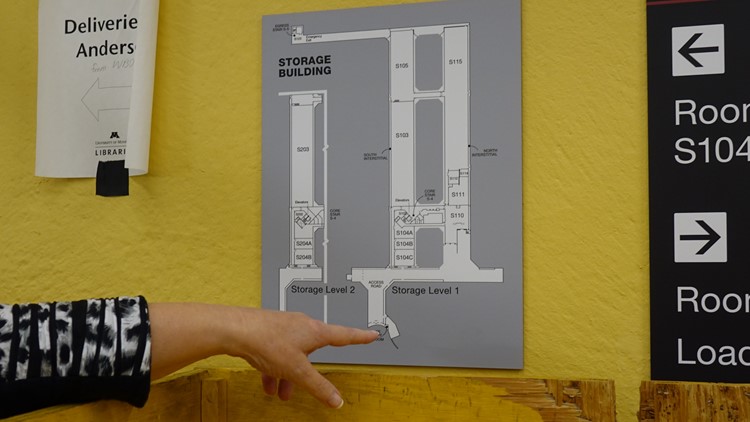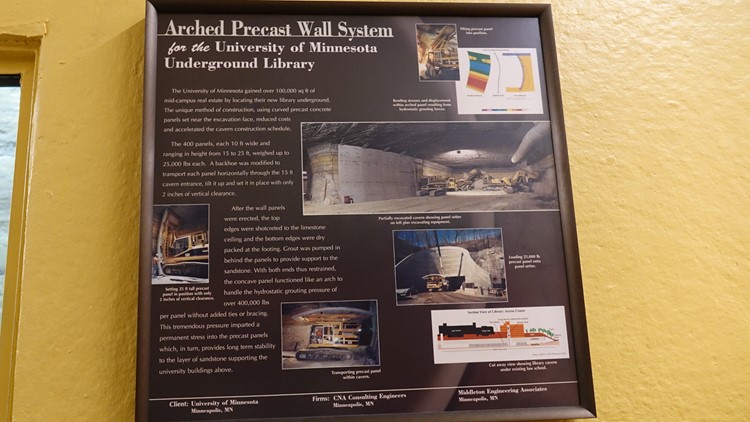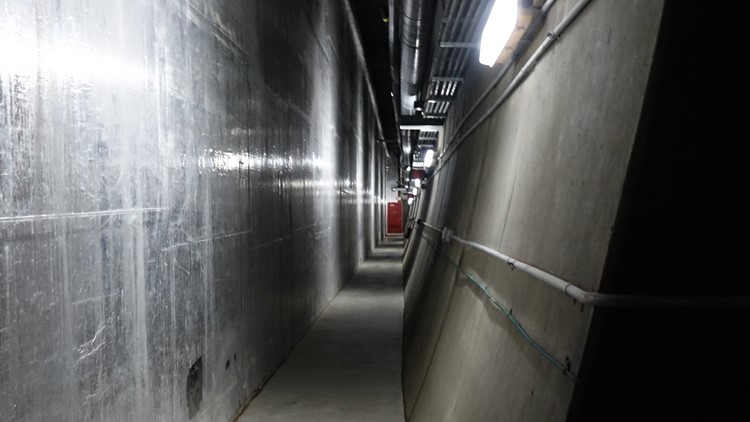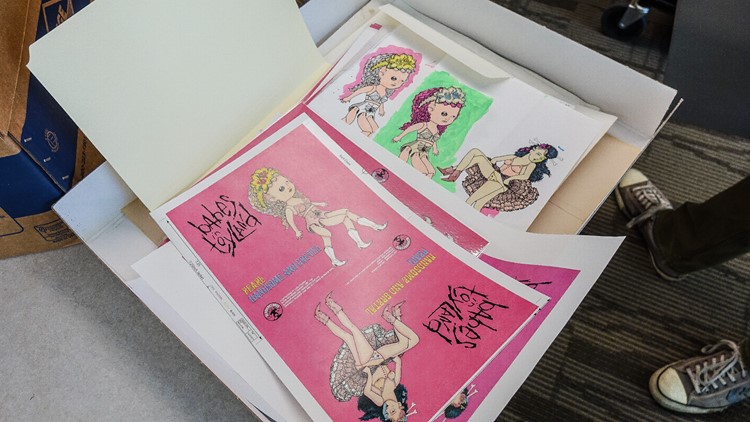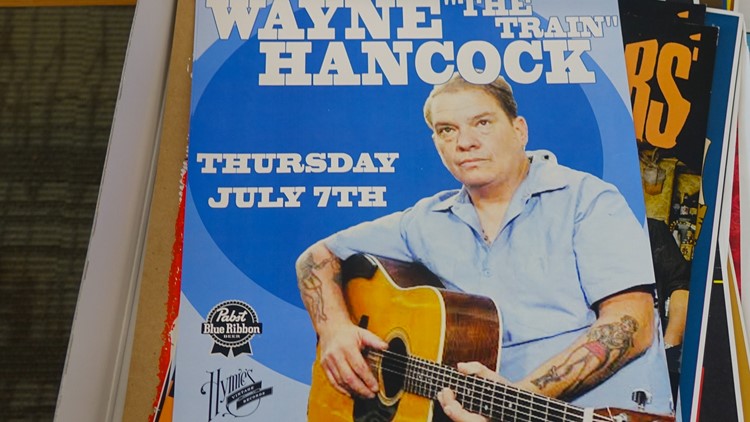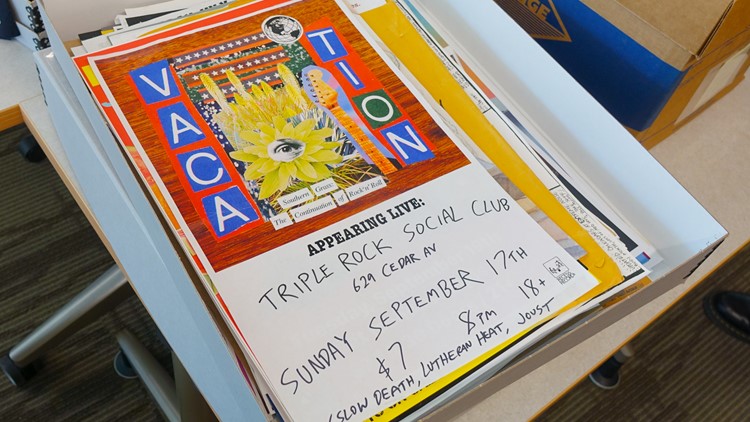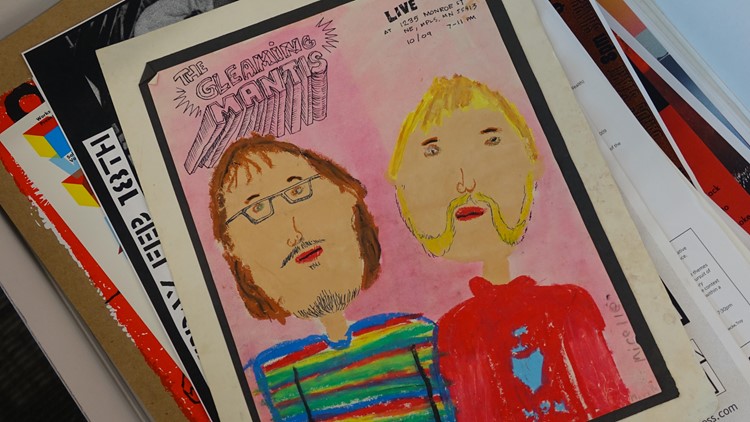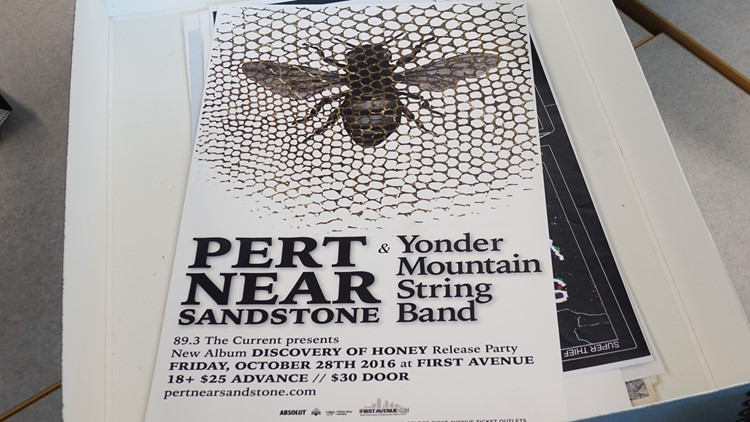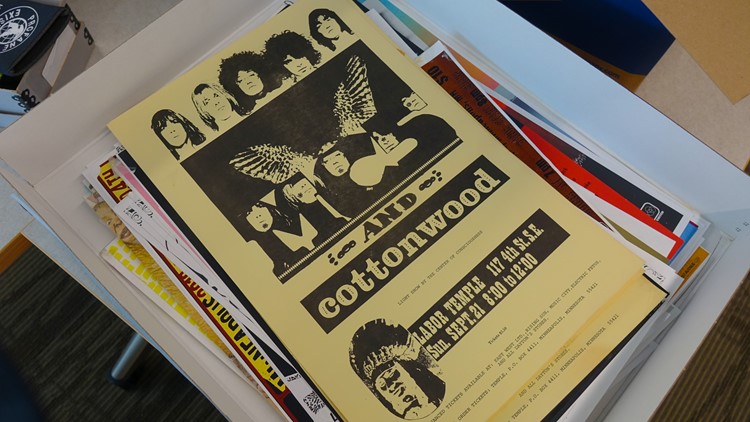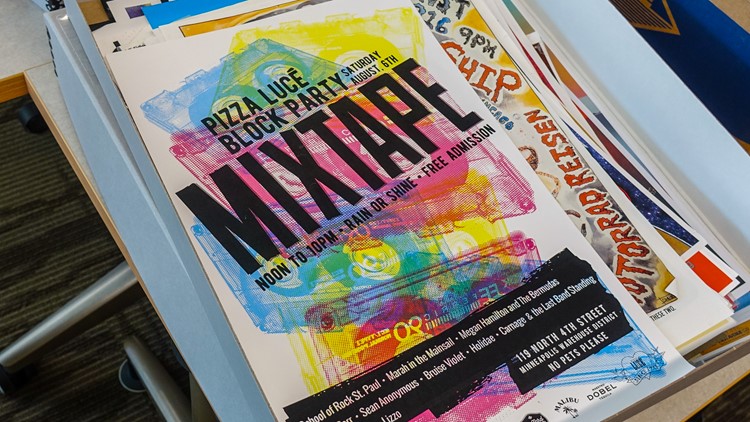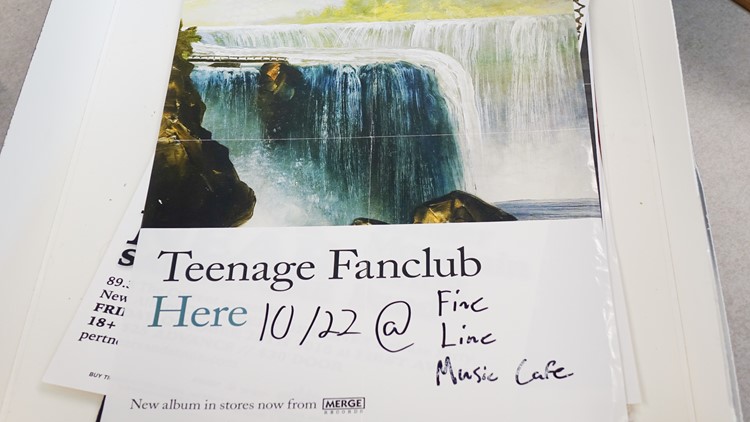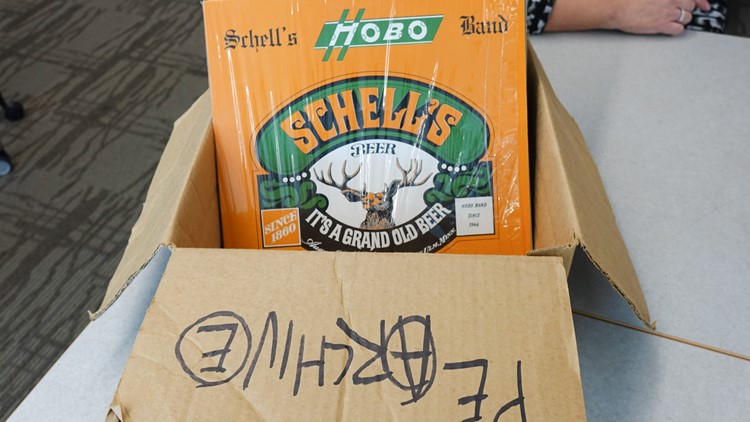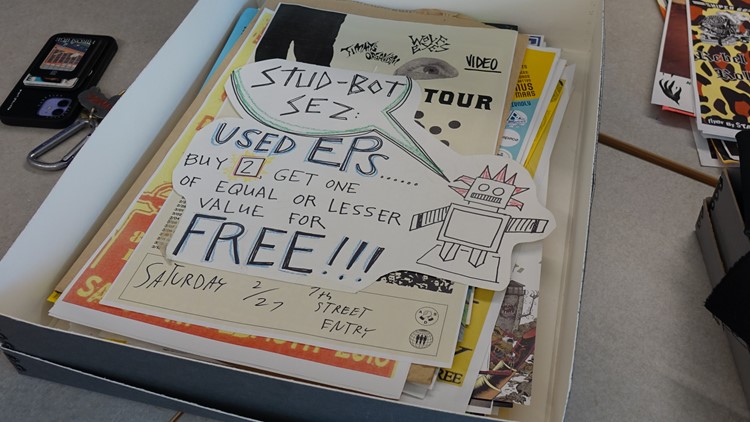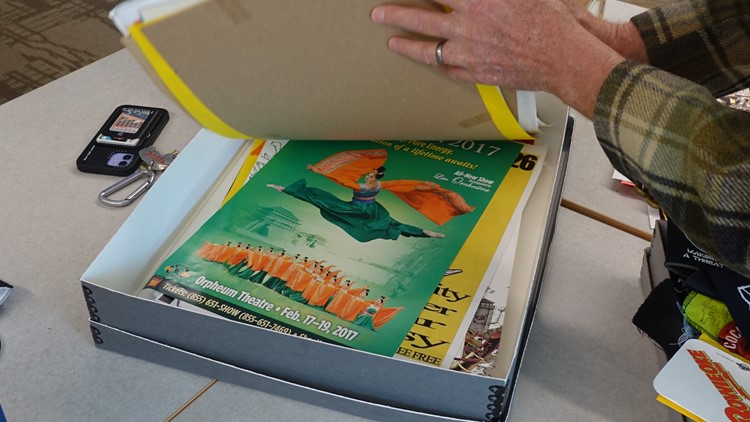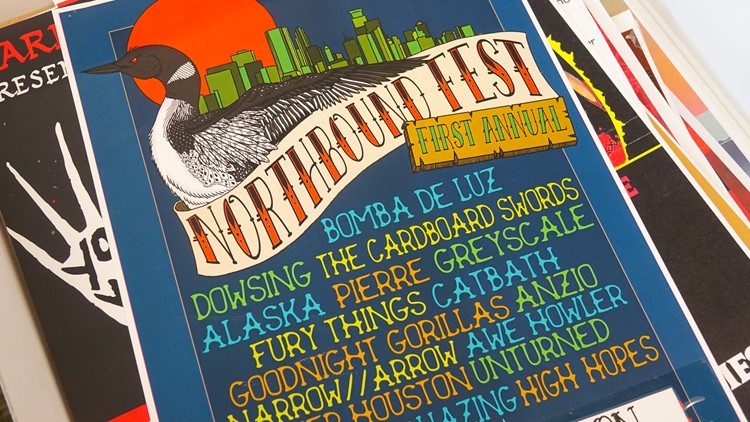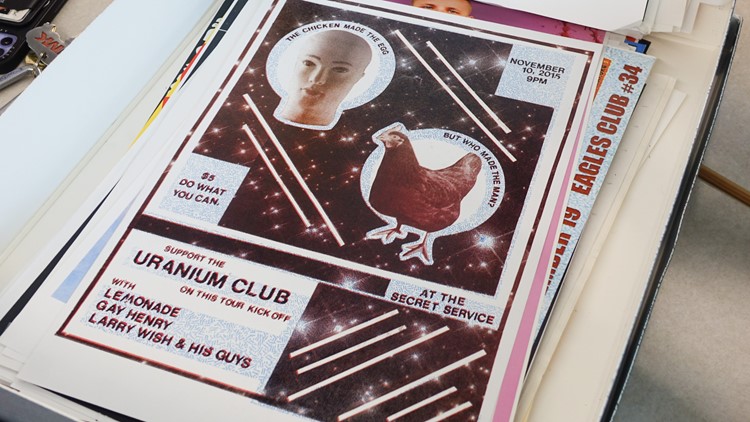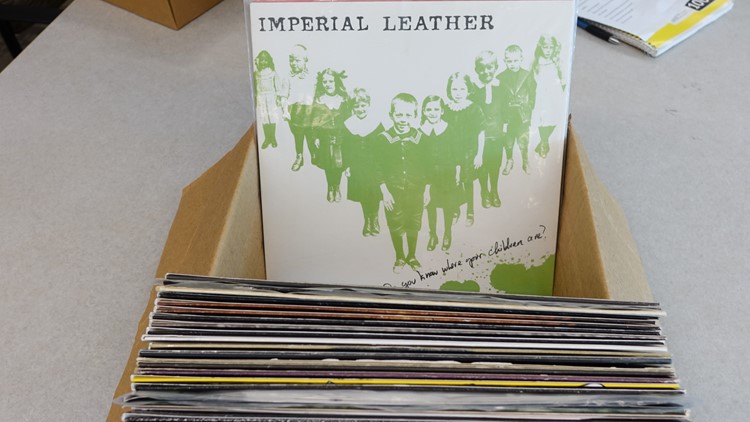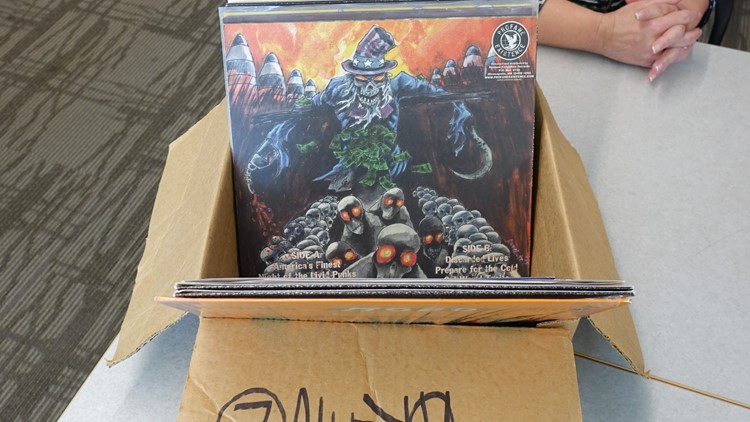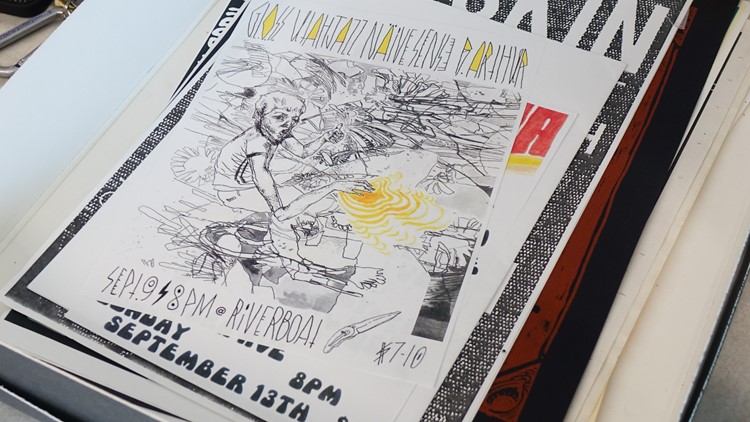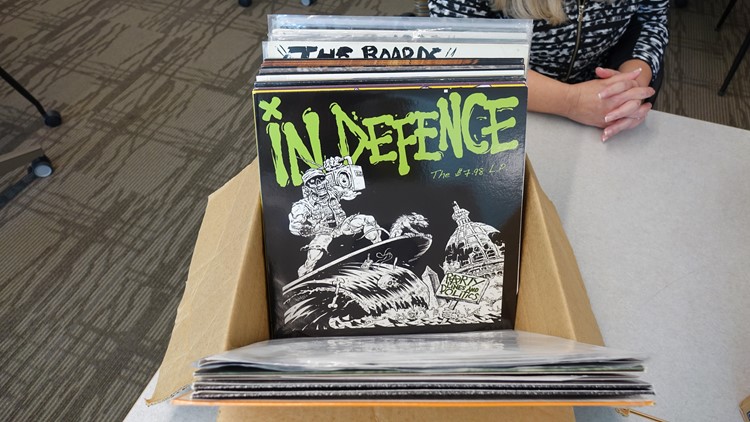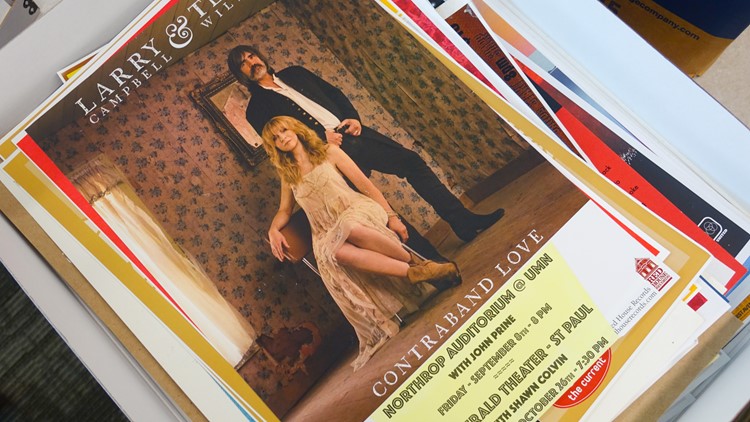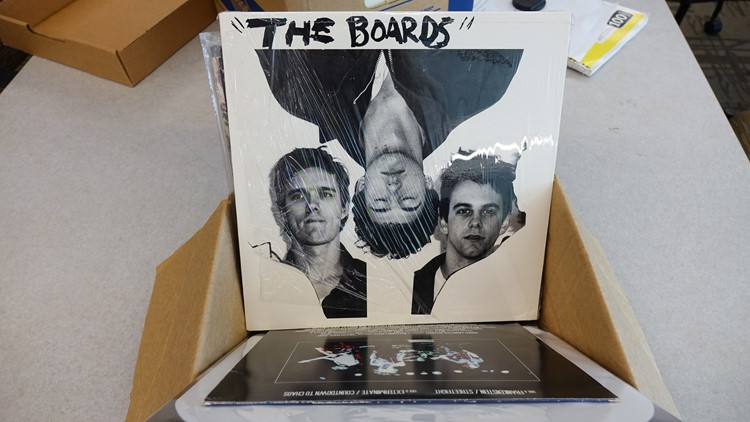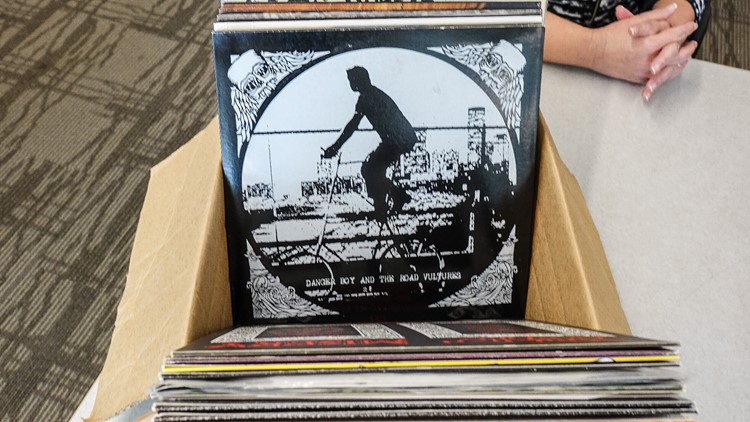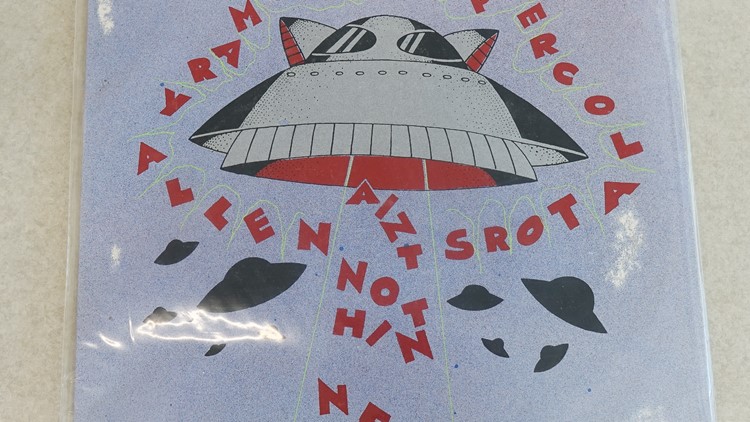Kind of a big deal: U of M's underground music archive goes hard(core)
Inside the school’s floor-to-ceiling Archives and Special Collections lives a collection in a class all its own – the Minnesota Underground Music Archive.
KARE 11

"This is my fault"
More than 80 feet beneath the floor of the Elmer L. Andersen Library on the University of Minnesota’s West Bank campus, caverns carved from prehistoric limestone and sandstone envelop over 1 million volumes of records, books, artifacts and other special collections.
But among the rare, historically significant items that fill the shelves of the school’s floor-to-ceiling Archives and Special Collections (ASC), lives an unsuspecting collection in a class all its own – the Minnesota Underground Music Archive (MUMA).
And depending on who you ask, there's one man to thank – or blame – for the abundance of music history stored deep inside the bluffs adorning the Mississippi River.
“I'm Tim Carroll, and this is my fault.”
U of M's underground storage facility
While working to build on the already robust Performing Arts Archive within ASC almost a decade ago, Hennepin Theatre Trust archivist Tim Carroll and a friend, local artist Liseli Polivka, proposed a new, one-of-a-kind archive be added – one chronicling the rich history of Minnesota’s local, underground music scene.
“Liseli and I just started literally by taking band flyers off of telephone poles,” Carroll said. “And then we also worked with Extreme Noise on Lake Street. Their windows are always full of show posters, but they expire, right? So they would take them down and throw them in a box and we pick those up from time to time.”

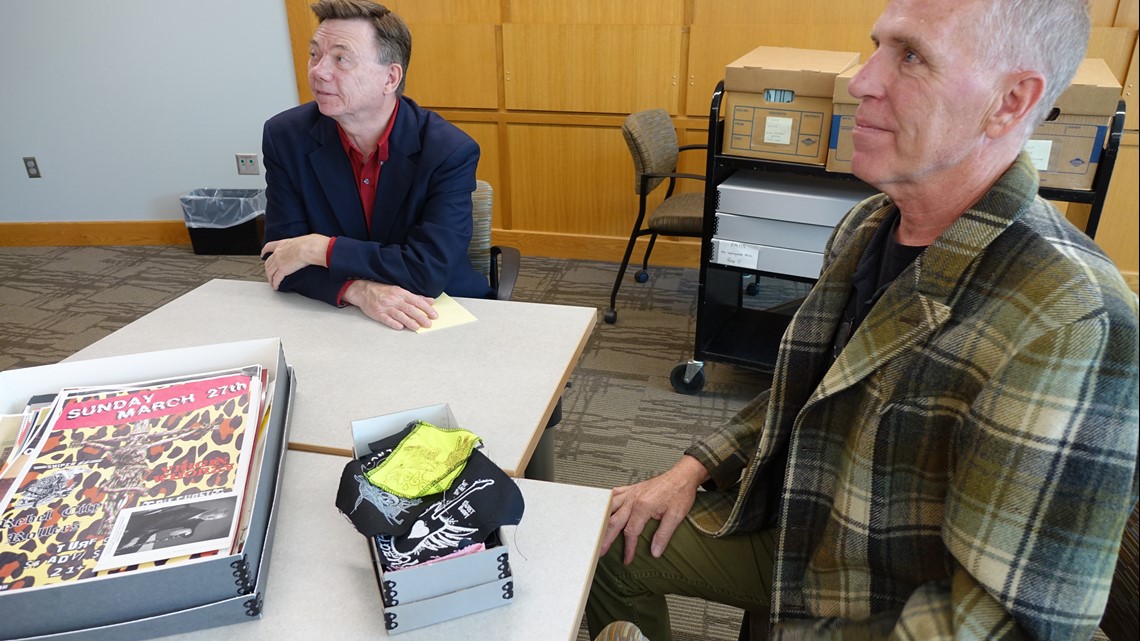
Within MUMA, you’ll find rare artifacts spanning the last dozen decades of Minnesota music, including handmade flyers boasting obscure punk, metal, hardcore and grindcore bands from the ’70s and beyond; bluegrass and folk materials from the late ’50s to ’70s – a collection once housed in the now-defunct West Bank School of Music; and priceless contributions donated by some of the all-time, most-beloved members of Minnesota music royalty.
“Right now, we’re working with the band Husker Du, and Grant Hart’s widow, Bridget,” Carroll said. “They are delivering their entire archive, including a Grant Hart side project, so that’s kind of like a crown for us.”
Not your average archive
While Carroll, a volunteer for ASC, took the initial steps to make his passion project come to life, there’s an entire team of historians, archivists, communications experts, librarians, lifelong music lovers – and even the performers themselves – who help organize, preserve and maintain MUMA’s growing collection. Amid the climate-controlled, 93,000-cubic-foot cavern that spans the equivalent of almost two football fields, Performing Arts Archive collections associate Pearl McClintock has had ample amounts of time to get familiar with MUMA’s stock and inner workings. Along with updating the library’s online database with new entries as they come in, handling the objects also falls within their job description.
“It’s a bit difficult,” McClintock said. “Not only is there the MUMA collection, which is a Performing Arts collection, but there are sub-collections. My goal is to try and keep everything as close together as I can.”


Each item in MUMA is carefully stored in acid-free boxes and folders with identifying labels that exist at a comfortably cool temperature, ranging from 57 to 62 degrees Fahrenheit, while objects like film and other audiovisual materials are stored in vaults that are kept even colder and drier than where the bulk of MUMA is kept. The elaborate effort seeks to significantly slow the natural deterioration of MUMA’s submissions over time.
“You want to preserve things for future generations – posterity; research; all that stuff,” McClintock said. “Some of it can be fragile, like extremely, even the paper materials. It's so fragile that there's a genuine fear.”

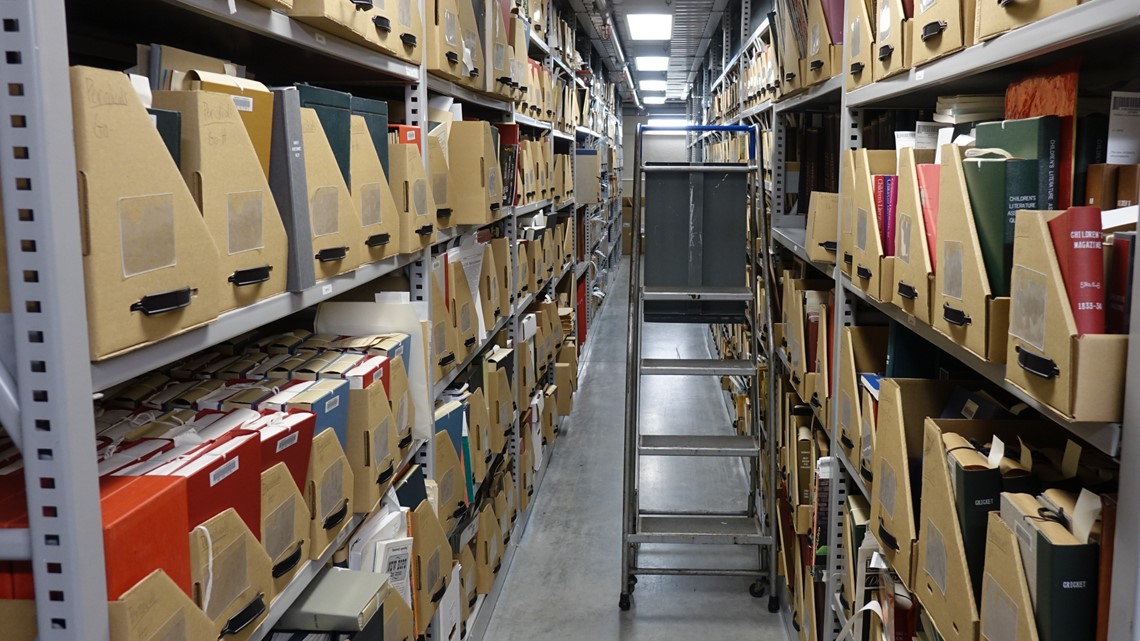
But despite that anxiety, they emphasized the importance of the school’s ability to make the archive endure for years to come.
“When folks think of archives, they do think of those prestigious institutions: the orchestra, and, you know, a ballet school, children's theater – things like that,” they said. “But it's really important for people to see and understand that things should be preserved no matter who they come from, and I think the idea of an underground music archive is a perfect example of that.”
"Kind of a big deal"
Luckily, as is the case for MUMA, most of the materials are well enough preserved to be handled by not only university staff, but also authors, scholars and generally curious inquisitors, who are welcome to contact ASC to visit the library and conduct their respective research – but you’ll have to do some digging.
“We have shirts; patches. We have CDs; DVDs. I think we have a thumb drive or two…probably,” Carroll said.
Despite the archive’s impressive selection of boxes overflowing with goods, Carroll says all items in MUMA are carefully curated with intention, seeking to acknowledge and recognize the decades-long path of pioneers, punks and people just passing through.
“People, like say, Prince – they don't need our archive. They’re archived. The world will know about Prince until we're all dead,” he said. “But if you have a crappy little garage band that you played three shows, but one night, you got to play 7th Street Entry, and you made your flyer out of pressed-on letters or whatever, I want that flyer badly. I want you to be in the archive.”
There aren't guidelines for entry into the archive, per se, but Carroll said items are likely to be included in the collection if they come from artists and bands who are "local," but don't necessarily have to be "kind of a big deal."
"If you know about them, you know, but if you don't know about them, you don't," he said.
And while some researchers may initially visit the archive to examine its physical contents, the consensus is that it's actually the stories behind the items that embody the magic of MUMA.
Minnesota Underground Music Archive
“We have a local performer named Venus DeMars, and she was playing a show in New Zealand,” Carroll said. “She had her setlist piece of paper on the floor, as you do, and a string snapped on her guitar and slashed her wrist. She started bleeding all over the setlist, but consummate professional, she's like, ‘The show is still on.’ So she finished her set, and now, we have the bloody setlist.”
Editor's note: After this story was published, Venus DeMars responded with a more concise account of what unfolded:
“I hit my wrist with my grinder, and the blade bit into it all the way to tendon... but you never feel a grinder wound till like the next day...it's just so massive, messing with nerve endings...so I didn't realize I'd done that....wondered why I was sweating so bad down my arm onto my hand...my pick getting all slippery...I saw the people standing up close to me looking down and backing away....then I saw the sets... and only then, did I connect the dots and realize I was bleeding very profusely. All while 20/20 (news TV program) was filming our show... I had to make an announcement, stop the set, run to the bars kitchen, and wrap it all up with bandages and masking tape..all while the cameras were following me... Then, had to run back out and perform a 3rd set to a packed house!!
A bit more than a snapped guitar string LOL.”
Another meaningful feature of the collection, agreed on by both Carroll and McClintock, is its ability to intersect with significant social issues, like LGBTQ+ rights and mental health awareness.
“So, Venus DeMars, right? She's a very famous trans musician,” McClintock said.
“I think the Venus DeMars collection is vital and important, but it goes way beyond just music because of her trans story,” Carroll added. “A complete pioneer – complete, utter pioneer in all of this.”
One of MUMA's next collections is anticipated to be a donation of materials by the family of a former bandmate of Carroll’s. He recently died by suicide.
“He was what kept the band together on our last tour because we were arguing so much,” said Carroll. “He would always make everybody lighten up. We loved him.”
So to honor him, they’ll immortalize his love for and involvement in the local music community by archiving some of his various band mementos.
“At his memorial, his brother put together all of these poster boards, and so it's not just [our band], this is other bands that he was in. His brother is taking this all apart to deliver here.”
Full up
As ASC and MUMA continue to accept donations into their collections, Kris Kiesling, director of ASC, says the caverns are already bursting at their seams. Fortunately, Kiesling says the university’s Board of Regents just approved funding for more archival space off-site, making it possible to pack even more into the space below. Right now, Kiesling says ASC utilizes three other off-site storage facilities.
“There are 15 distinct collecting units within Archives and Special Collections, and there are, of course, many, many sub-collections,” Kiesling said. “It's a very broad collecting scope, and we're one of the largest in the country in a university setting.”
In short, McClintock said, “It’s full up.”

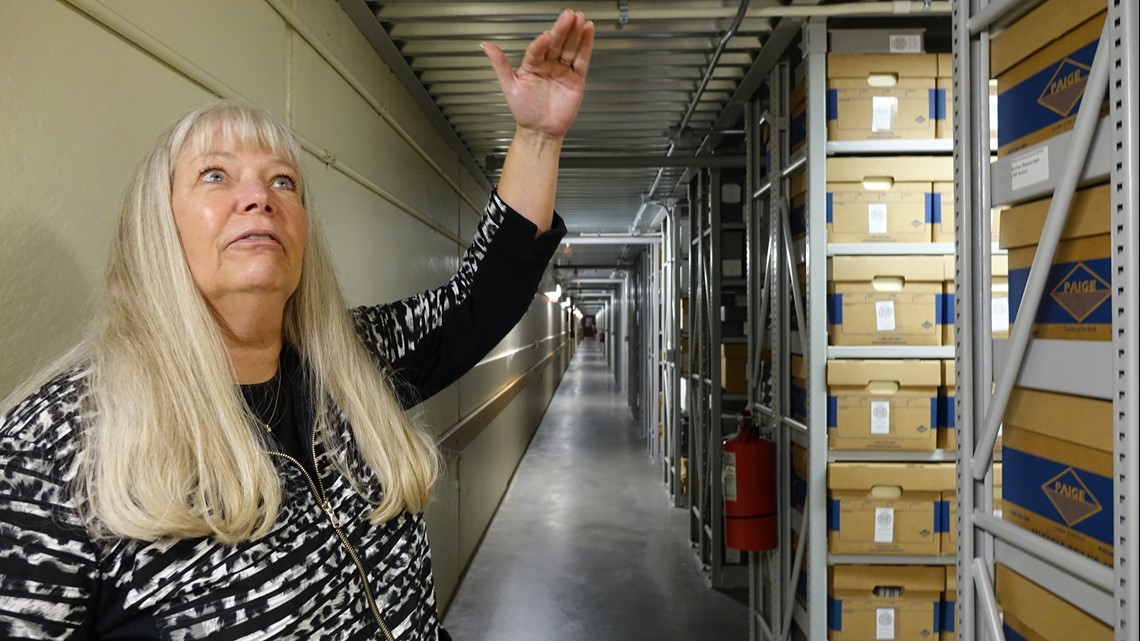
If you’re interested in learning more about the University of Minnesota’s Archives and Special Collections, visit its website here.
You can also search the archives online here.
To learn more about MUMA, click here or visit its Facebook page.
If you or someone you know is facing a mental health crisis, there is help available from the following resources:
- Crisis Text Line – text “MN” to 741741 (standard data and text rates apply)
- Crisis Phone Number in your Minnesota county
- National Suicide Prevention Lifeline at 1-800-273-TALK (8255), Talk to Someone Now
- Throughout Minnesota call **CRISIS (**274747)
- The Trevor Project at 866-488-7386
Watch more local news:
Watch the latest local news from the Twin Cities in our YouTube playlist:


